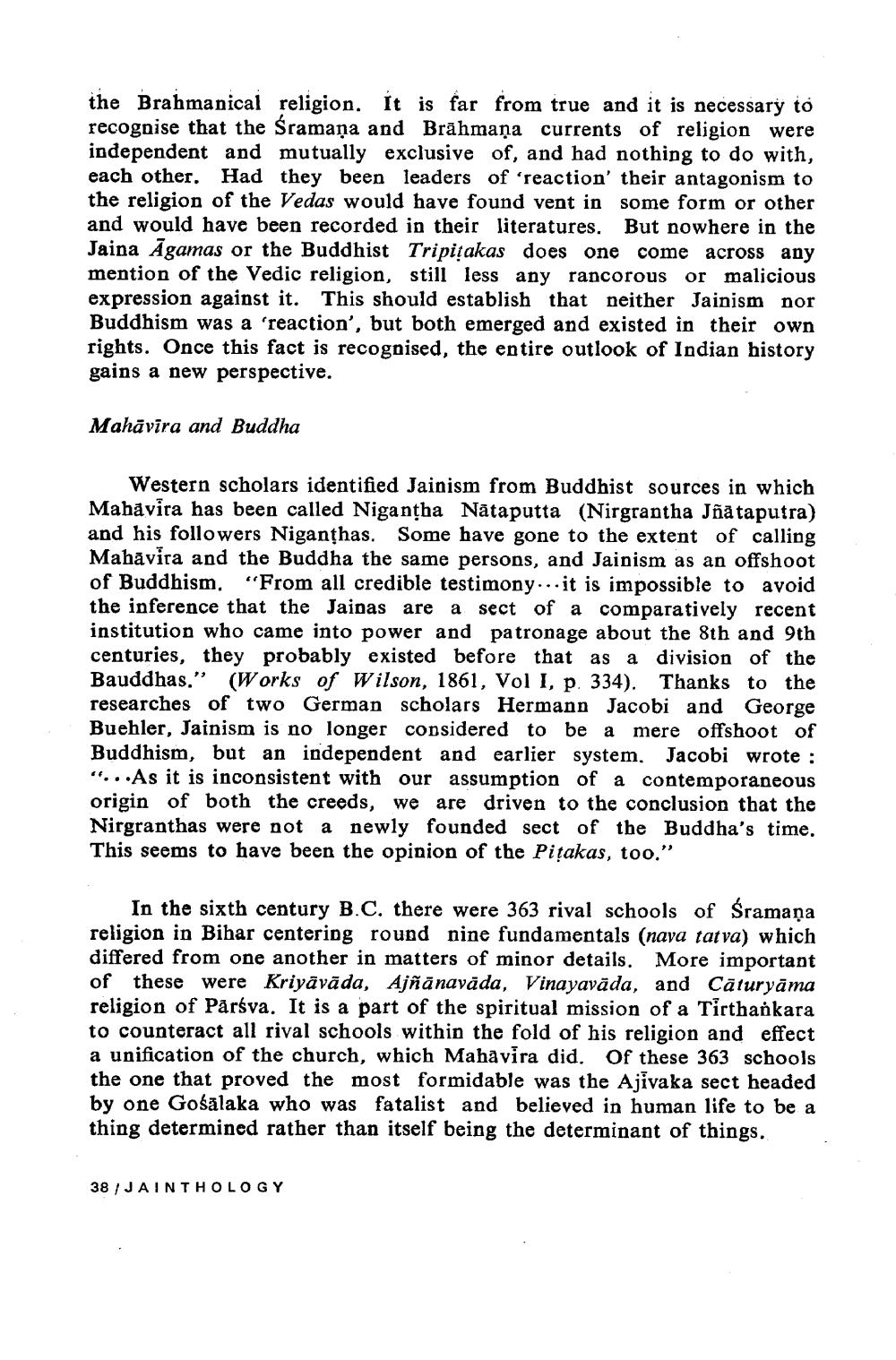________________
the Brahmanical religion. It is far from true and it is necessary to recognise that the Sramaņa and Brāhmaṇa currents of religion were independent and mutually exclusive of, and had nothing to do with, each other. Had they been leaders of 'reaction' their antagonism to the religion of the Vedas would have found vent in some form or other and would have been recorded in their literatures. But nowhere in the Jaina Āgamas or the Buddhist Tripitakas does one come across any mention of the Vedic religion, still less any rancorous or malicious expression against it. This should establish that neither Jainism nor Buddhism was a 'reaction', but both emerged and existed in their own rights. Once this fact is recognised, the entire outlook of Indian history gains a new perspective.
Mahāvīra and Buddha
Western scholars identified Jainism from Buddhist sources in which Mahavira has been called Nigantha Nātaputta (Nirgrantha Jñå taputra) and his followers Niganthas. Some have gone to the extent of calling Mahavira and the Buddha the same persons, and Jainism as an offshoot of Buddhism. "From all credible testimony... it is impossible to avoid the inference that the Jainas are a sect of a comparatively recent institution who came into power and patronage about the 8th and 9th centuries, they probably existed before that as a division of the
is." (Works of Wilson, 1861, Vol I, p. 334). Thanks to the researches of two German scholars Hermann Jacobi and George Buehler, Jainism is no longer considered to be a mere offshoot of Buddhism, but an independent and earlier system. Jacobi wrote: "...As it is inconsistent with our assumption of a contemporaneous origin of both the creeds, we are driven to the conclusion that the Nirgranthas were not a newly founded sect of the Buddha's time. This seems to have been the opinion of the Pițakas, too."
In the sixth century B.C. there were 363 rival schools of Sramana religion in Bihar centering round nine fundamentals (naya tatva) which differed from one another in matters of minor details. More important of these were Kriyāvāda, Ajñā navāda, Vinayavāda, and Cāturyāma religion of Paráva. It is a part of the spiritual mission of a Tirthankara to counteract all rival schools within the fold of his religion and effect a unification of the church, which Mahavira did. Of these 363 schools the one that proved the most formidable was the Ajivaka sect headed by one Gośālaka who was fatalist and believed in human life to be a thing determined rather than itself being the determinant of things.
38 / JAINTHOLOGY




